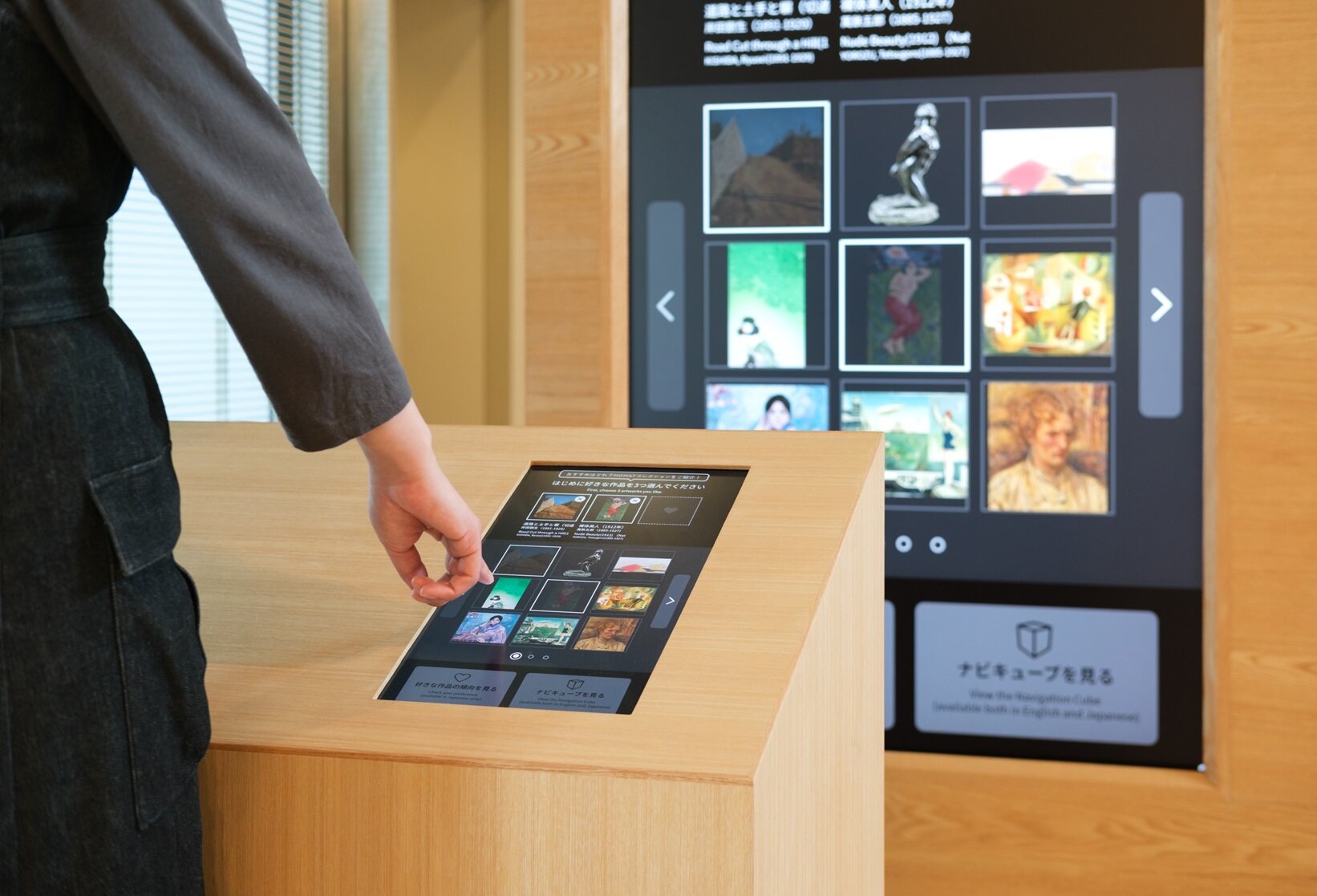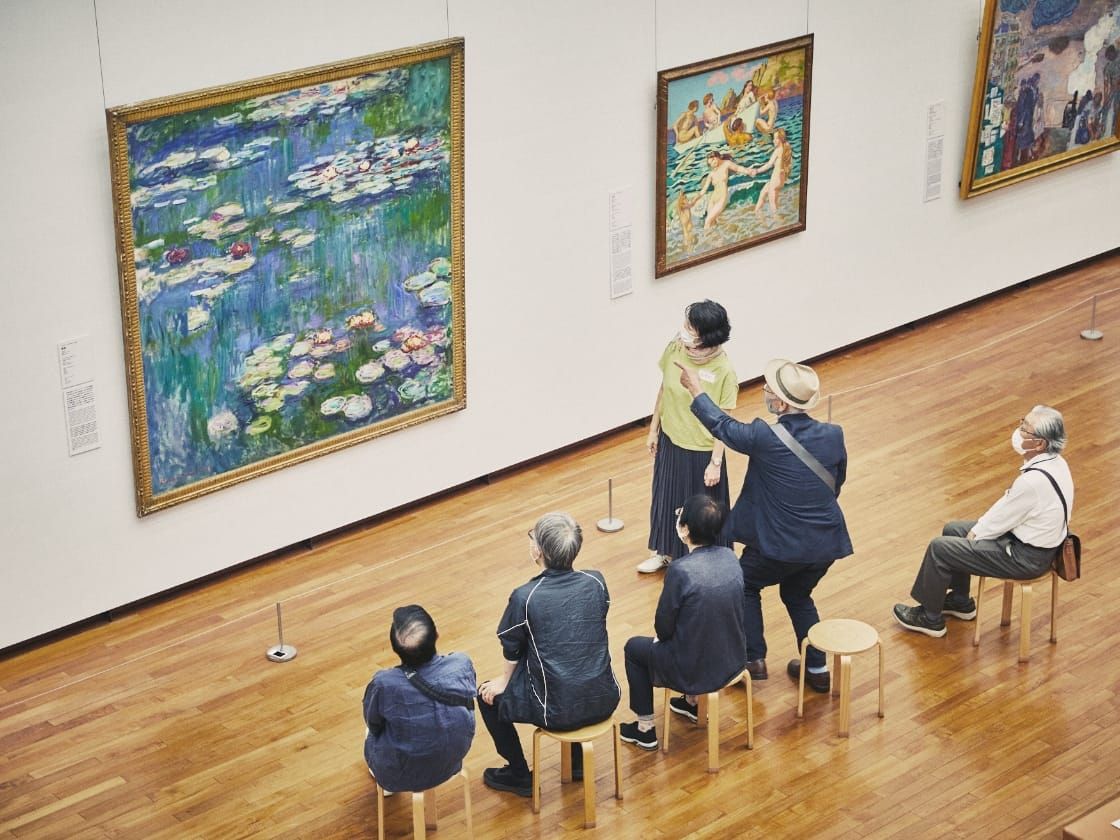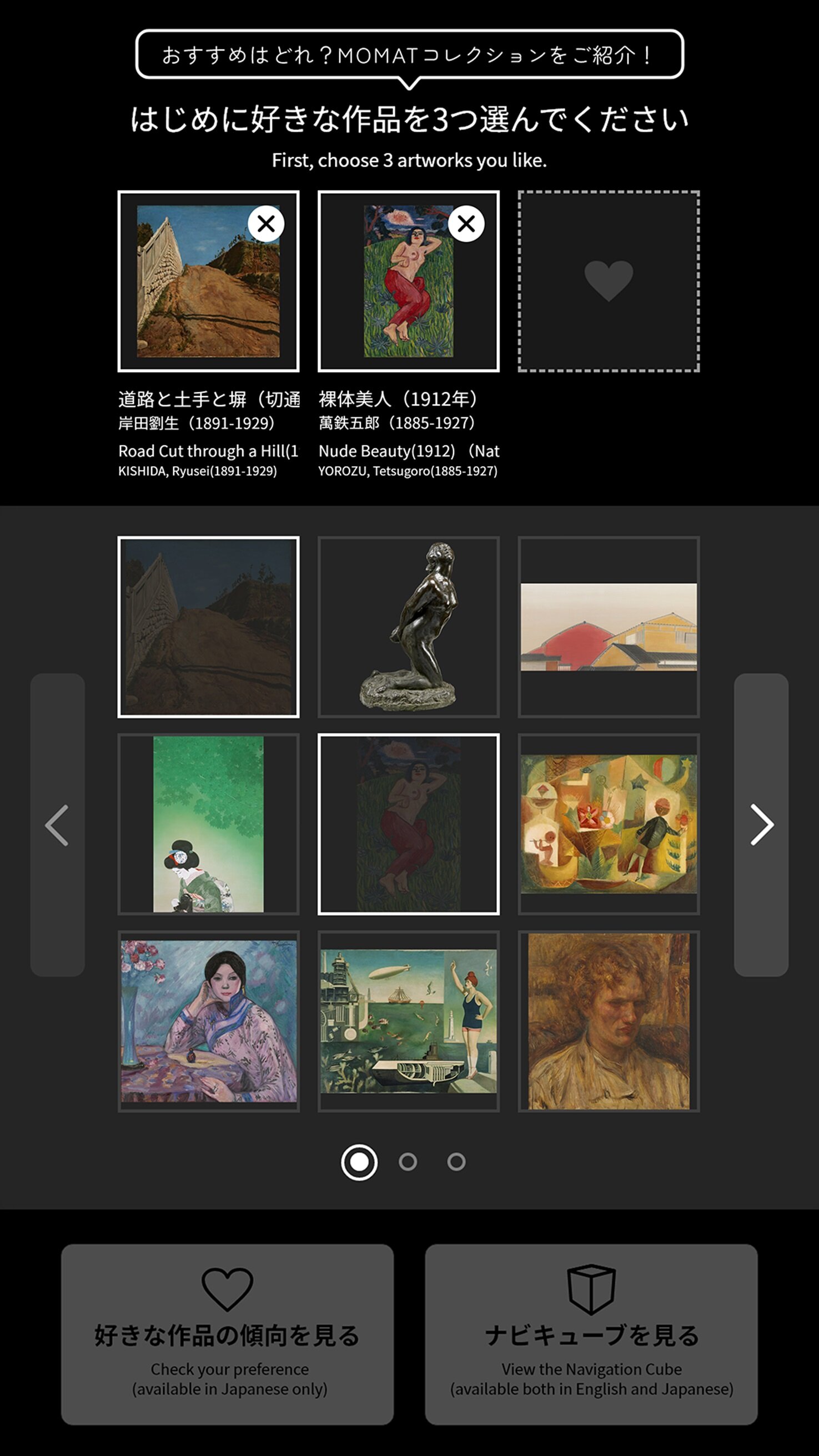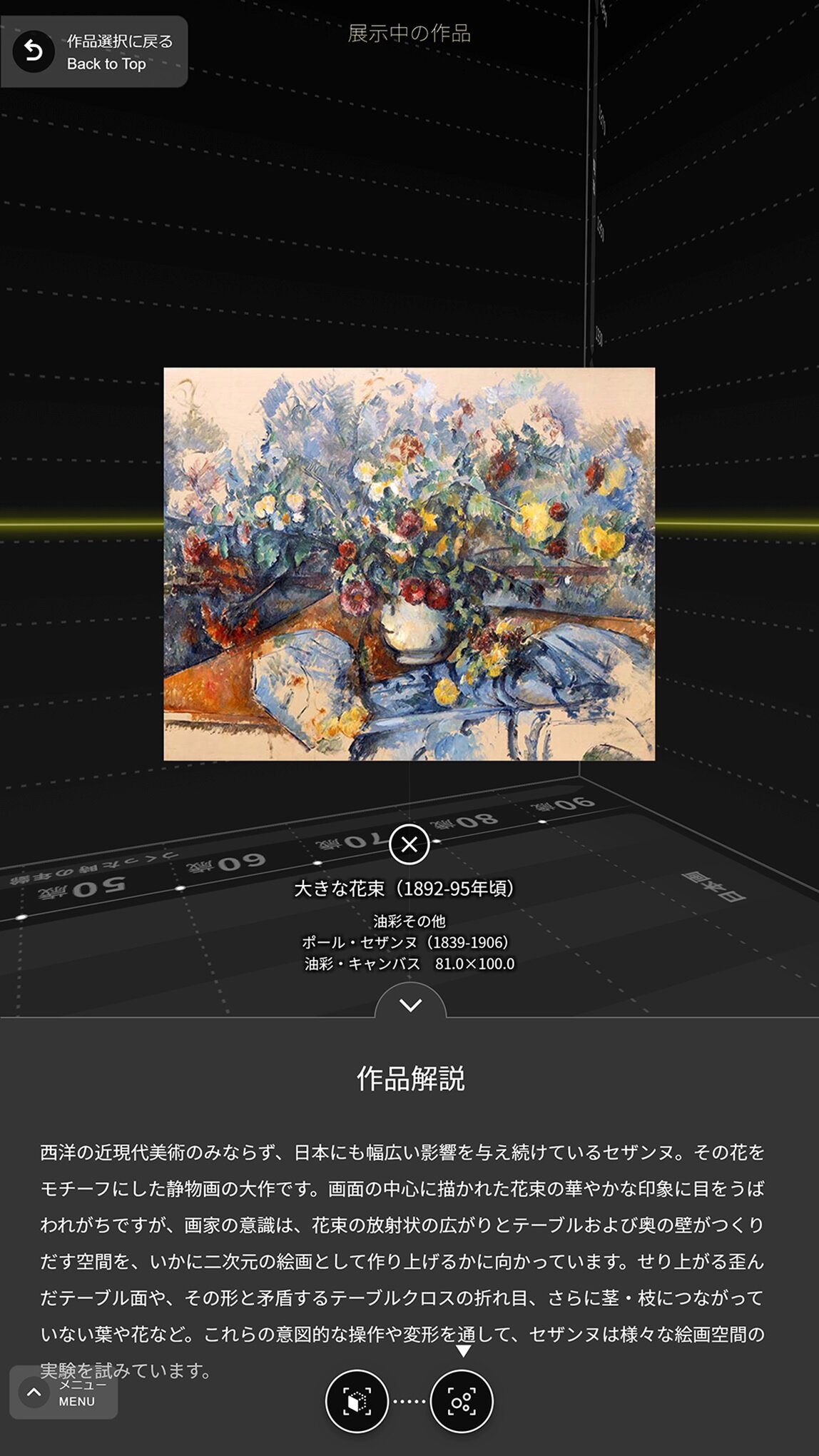The collaborative production of a new service for viewing works using high-definition images (National Museum of Modern Art, Tokyo x Dai Nippon Printing Co., Ltd. (DNP))
Kitamura Mana, National Center for Art Research

In March 2023, the MOMAT Collection Navigation Cube was installed in the entrance lobby of the National Museum of Modern Art, Tokyo (MOMAT) as MOMAT’s first permanent digital contents service. It was produced by MOMAT in collaboration with Dai Nippon Printing Co., Ltd. (DNP).
The National Center for Art Research’s Social Cooperation Group was involved in promoting this project. This report introduces this collaborative project as an example of a partnership between a museum and a corporation that matches the needs of the former with the strengths of the latter.
1. The development goals and MOMAT’s needs
The MOMAT Collection Navigation Cube (hereinafter “Navigation Cube”) is an interactive service that uses high-definition images of works in MOMAT’s collection. When developing the Navigation Cube, MOMAT wanted it to perform the following three functions:
・ Introduce the Collection Exhibition MOMAT Collection
・ Utilize digital technology to showcase the diversity and abundance of MOMAT’s collection
・ Introduce an interactive feature

(1) Introduce the Collection Exhibition MOMAT Collection
The MOMAT Collection periodically displays around 200 works from the museum’s collection of over 13,000 works. From the 4th floor down to the 2nd floor, it traces the arc of Japanese modern and contemporary art through a series of 12 rooms. The idea was to prepare contents on the 1st floor entrance that would entice as many people as possible to visit the exhibition.
(2) Utilize digital technology to showcase the diversity and abundance of MOMAT’s collection
Though the MOMAT Collection displays around 200 works, this is only a fraction of the museum’s total holdings. Furthermore, the exhibits are rotated around five times a year, with different works on display each time. The decision was made to utilize the power of digital technology to make visitors aware that MOMAT has a rich abundance of diverse works in addition to those on display in the exhibition rooms. A further goal was to link this project to other initiatives contributing to the utilization of high-definition images of works in MOMAT’s collection.
(3) Introduce an interactive feature
One of MOMAT’s core tenets is the belief that visitors should have a two-way dialogue with art rather than just “viewing” or “listening to explanations,” with this approach enhancing the enjoyment of the experience by enabling visitors to delve deeply into the appeal of the works. A further goal when preparing these contents was to ensure they had interactive elements that could facilitate new discoveries and enhance the enjoyment of these encounters with art.
2. A collaborative production with DNP
Navigation Cube is a work-viewing service produced in collaboration with DNP. DNP is a member of the MOMAT Corporate Partnership*1, an MOMAT initiative that promotes corporate support for the museum. Since 2017, DNP has mainly provided support for MOMAT’s initiatives in the area of digital technology. Talks about content production began in 2021, with discussions then taking place about the kinds of services and contents that MOMAT wanted to provide to visitors.
In the end, the decision was made to produce the Navigation Cube based on DNP’s own interactive contents system “みどころキューブ®” *2, with the new service specially-designed to offer users recommendations tailored to their personal tastes.
3. Navigation Cube features: Discerning artistic tastes and making recommendations
The Navigation Cube features a “Preference Test Page,” which discerns which kind of works the user likes, and a “Navigation Cube,” which introduces some recommended works.
Firstly, the user selects three works of their choice from the images that appear on the screen. Based on this, the Navigation Cube introduces some recommended works on the Cube Display.
This feature was designed to introduce users to works they may never have encountered otherwise. Users can read information and closely examine the high-definition images that appear on the 4K monitor, with this serving to reduce the distance between the user and the recommended works.
The recommendations also include “works on display.” The user can then have fun trying to find the work in the MOMAT Collection.
4. Corporate partnerships: Strengthening ties between museums and society
The aim of the Navigation Cube’s “introducing recommendations” function is to facilitate a deeper personal experience of art appreciation through encounters with MOMAT’s works that are tailored to each user’s particular tastes. Exhibitions create experiences that resonate with each person’s sensibilities, with the Navigation Cube designed as a light-hearted, fun introduction to the museum experience. The hope is that users can enjoy themselves through an experience that feels akin to fortune telling.
The development of content like this requires technology not available at museums, so the support of corporations with ample expertise, knowledge and technology is needed. This co-production is a clear example of a collaborative relation between a museum and a corporation.
These collaborations are mutually beneficial; museums can provide visitors with tools to enhance their experiences, for example, while businesses can use the projects to develop new services.
The main activity of the National Center for Art Research’s Social Cooperation Group is the promotion of collaborative projects between museums and corporations/organizations that create value for all parties involved. We will continue to strive toward this goal going forward.
As an added bonus for museums, these corporate partnerships allow businesspeople often too busy to encounter museums to build connections with museum activities and works through their jobs. It was really nice to see DNP staff becoming more knowledgeable about the works during the production process.
We believe we can expand the possibilities of museums in society by forging these kinds of partnerships between museums and corporations. This is the belief that drives the activities of the Social Cooperation Group.
*1 For more details on the MOMAT Corporate Partnership: https://www.momat.go.jp/support/circle
*2 An interest-sparking art viewing tool that allows users to gain information related to the art pieces and artifacts they are viewing.





